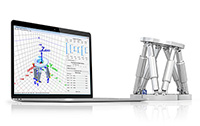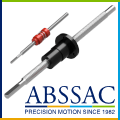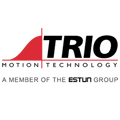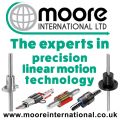
Posted to News on 20th Feb 2020, 00:00
Choosing the Right Hexapod Model
Which hexapod is suitable for a specific application and how do external factors influence the limits of the workspace and load? With the hexapod simulation tool from PI (Physik Instrumente) you can check even before making a decision on which model to buy if a hexapod is suitable for the positioning task at hand and if it is, which model exactly is suitable. The user can simulate comfortably the workspace, the mechanical load due to masses and external forces, the reference coordinate system, or the pivot point, for example, without having to have in-depth specialist knowledge.The practical tool can be downloaded for free at www.pi.ws/hexapods/software.

arallel-kinematic hexapods often are a good alternative to stacked single axis positioners when used in multi-axis positioning applications. They are more compact, achieve high dynamics on all axes, and they are available in many models for various loads and travel ranges.
Datasheet data only offers limited insight into which hexapod is suitable for a particular application. Although datasheets provide detailed information on, for example, the maximum travel ranges of the individual axes; the workspace limits of parallel kinematics, however, vary according to the current position (translational and rotational coordinates), the current coordinates of the rotational point (pivot point), and the chosen reference coordinate system. With the help of the simulation tool, these limits can be calculated for standard hexapods in Cartesian coordinates, graphically represented, and adjusted to the respective application. Mechanical problems, which can occur in the application, can, therefore, already be found and solved without having to own a hexapod or controller.
The same holds true for the load limit value of the hexapod that also varies depending on a number of factors. These factors being the orientation of the hexapod when mounted, the planned load, and especially the position of the center of mass, the respective position of the motion platform (translational and rotational coordinates) as well as the forces and the torques that work on the motion platform of the hexapod and on the individual struts. These influencing factors can also be simulated with the help of graphical elements such as sliders in order to find out which hexapod model is best suited for the application. With the help of this tool, finding an appropriate parallel-kinematic positioning solution becomes easy
Trent House, University Way
Cranfield Technology Park
MK43 0AN
UNITED KINGDOM
+44 (0)1234 756360
















